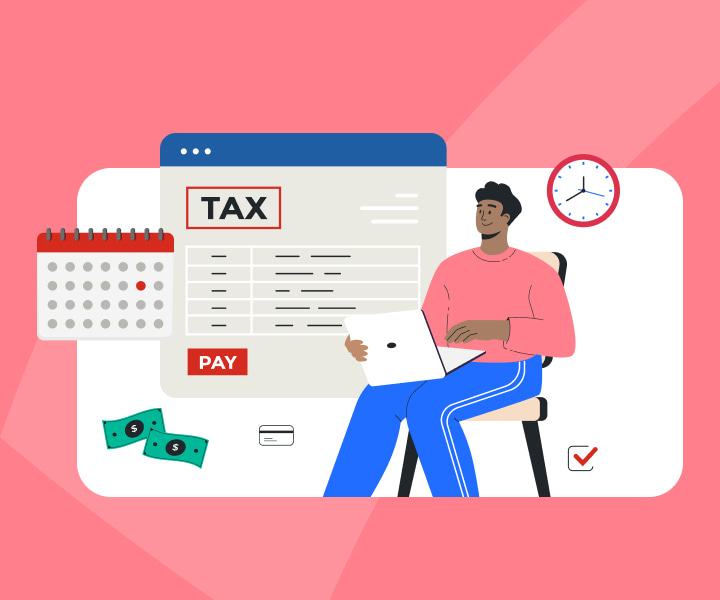Non-Resident Section 216 – Rental Property
TurboTax Canada
March 1, 2021 | 3 Min Read
Updated for tax year 2025

Understanding your residency status is critical for the purpose of filing your tax return with the Canada Revenue Agency. This link will explain it best!
Electing under Section 216 – Rental Property
This means you are reporting income from Rental or immovable property from Canada. This is a separate return from others you may have to send to the CRA. You file one return for ALL your rental income & expenses. You will report your net income and pay taxes accordingly, if you paid more tax then necessary the CRA will refund you the difference.
If you elect under this section, you have to report this income within 2 years of the income earned at the end of that specific year. I.e., 2023 rental income, you have until December 2025 to report this income. You will report your gross income but you are only paying tax on the net. You will also claim the taxes withheld on line 43700 to offset your taxes payable.
Foreign Tax Credit:
You will receive a Federal Foreign Tax Credit for income or profits you have paid on this earned source in a country with which the Canadian government has a treaty.
NR6
If you want to report your net rental income then you or your property manager will have to complete Form NR6 Undertaking to File an Income Tax Return by a Non-Resident Receiving Rent from Real or Immovable Property or Receiving a Timber Royalty. This form needs to be sent to the CRA on or before January 1 of each year you have rented out your property. Alternatively, you can send it in before the first rental payment is due. Until the CRA approves your request, you will continue to report your gross rental income. Once approved you must file under Section 216 for that year, despite receiving a refund or owe any money.
Upon approval by the CRA, your property manager/agent can withhold the non-resident tax of 25% on your net income. Taxes are due on the 15th day of the following month after rental income is paid to you. Example : Rent is due on March 1st, you or your manager/agent will ensure that taxes are paid to the CRA by April 15th. If either of you fails to do this on time, then the CRA reserves the right to charge compound daily interest on the amount that was not remitted on time, as well as charge penalties.
You or your agent will have 2 copies of the NR4 slip Statement of Amount’s Paid or credited to Non-Residents of Canada showing gross rental income & taxes withheld as well. You will provide one copy of your NR4 to the CRA along with your Section 216 return. It’s important that you give them your NR4, otherwise your claim may be denied.
When is it due:
Section 216 return is due on or before June 30th, with or without the NR6 form completion. However your balance owing is always due on April 30th and interest & penalties on the balance owing starts to accumulate May 1st. Furthermore, April 30th is the due date if you disposed of rental property where you previously claimed CCA & you want to recapture it on your tax return. This rule remains as such for net rental losses as well.
The issue with NOT filing on time:
It’s important to note that if you have an approved NR6 form filed with the CRA and you do not file your Section 216 return on time, you will be subject to tax on your gross income and your agent will receive a tax assessment for non-residents. So this means the 25% withheld would be subject to all your rental income instead of your income minus your expenses. Big difference!
For further details, visit this TurboTax FAQ.
How do I send my non-resident tax return to the CRA?
As a non-resident you will not be able to NETFILE your tax return, you will have to print and mail or fax it to the CRA. Take note that faxing is a temporary measure that they have implemented due to the long international mail delays. Furthermore, If you are filing more than one person’s tax return, ensure that you send each person’s tax return separately. However, if you are filing more than one year for that specific person, you can put them all in one envelope.
References and Resources:
- International tax and non-resident enquiries
- 5013-SA Schedule A – Statement of World Income (for non-residents and deemed residents of Canada)
Related articles

© 1997-2024 Intuit, Inc. All rights reserved. Intuit, QuickBooks, QB, TurboTax, Profile, and Mint are registered trademarks of Intuit Inc. Terms and conditions, features, support, pricing, and service options subject to change without notice.
Copyright © Intuit Canada ULC, 2024. All rights reserved.
The views expressed on this site are intended to provide generalized financial information designed to educate a broad segment of the public; it does not give personalized tax, investment, legal, or other business and professional advice. Before taking any action, you should always seek the assistance of a professional who knows your particular situation for advice on taxes, your investments, the law, or any other business and professional matters that affect you and/or your business.









